Obsessive-Compulsive Disorder (OCD) is far more than just an inclination to keep things neat or double-check tasks. Many people occasionally double-check that they’ve locked the door or turned off the stove. However, OCD transforms these everyday behaviors into repetitive, ritualistic actions driven by deep anxiety. In my experience, this manifests in repeated checks of household appliances like the stove—sometimes not just once, but five or more times before I can leave the house.
For individuals with OCD, these repetitive behaviors—called compulsions—are often driven by obsessions, which are intrusive thoughts that cause overwhelming anxiety. These obsessions can range from fears about safety, like wondering if the stove was really turned off, to concerns about contamination or unwanted, intrusive thoughts. In my case, thoughts about potential dangers at home lead me into a loop of actions—checking, cleaning, wiping down surfaces—just to manage the anxiety triggered by the thought that something could go wrong.
The Impact of OCD on Daily Life
The impact of OCD on daily life can be severe. Obsessive thoughts are not just fleeting ideas; they persist until the individual performs certain rituals or actions to neutralize them. These rituals, such as compulsively checking or cleaning, are time-consuming and can interfere with work, relationships, and even basic daily routines. In my own life, what might start as a simple task, like making sure the stove is off, turns into a series of steps that can last for several minutes, disrupting my schedule and often making me late.

For many individuals, compulsions are tied to specific fears or anxieties. For example, someone who fears contamination might engage in constant hand-washing or cleaning. This obsessive need for cleanliness is common among those who experience contamination OCD. Similarly, individuals like myself, who worry about potential hazards, may develop checking behaviors to ensure that everything is “safe.”
OCD Symptoms: Beyond Obsessive Thoughts
While compulsions are usually visible actions, OCD also includes mental rituals that can be harder to spot. Some people perform mental compulsions, silently repeating words or phrases to counteract intrusive thoughts. These mental rituals can be just as exhausting as physical compulsions, and they often go unnoticed by others. When my anxiety spikes, I find myself mentally going over the same thoughts, as if trying to neutralize the fears by thinking them through repeatedly.
People with OCD may also experience what’s called “Pure O,” or purely obsessional OCD. This form of the disorder involves intrusive thoughts without outward compulsions. The thoughts themselves—such as harm-related obsessions or intrusive fears about contamination—are distressing enough to cause significant anxiety, even without the associated compulsive actions. This internal battle is just as debilitating as the visible rituals of other forms of OCD.
Types of OCD and Their Unique Challenges
OCD manifests in various ways, and no two individuals experience it exactly the same. While some people are driven by fears of contamination, others are plagued by intrusive thoughts about harming themselves or others (Harm OCD). Relationship OCD (ROCD) involves obsessive doubts about one’s romantic relationship, often accompanied by the compulsion to constantly seek reassurance from their partner.
A more severe form of OCD, such as in cases like Howard Hughes, can lead to extreme isolation, as individuals become unable to leave their homes or maintain regular social interactions due to the intensity of their obsessions and compulsions. While my personal experience isn’t as extreme, I can understand how OCD can slowly limit one’s ability to function normally in society.
Treatment and Coping Strategies for OCD
Fortunately, there are treatments that can help manage OCD. Cognitive Behavioral Therapy (CBT) is one of the most effective forms of therapy for OCD, and a technique called Exposure and Response Prevention (ERP) is often used to help patients confront their obsessions without resorting to compulsive behaviors. In ERP, patients are gradually exposed to anxiety-provoking situations and taught to resist the urge to perform their usual rituals.
From my own experience, ERP can be incredibly challenging but also freeing. By confronting the anxiety head-on, without falling into the compulsion cycle, I’ve learned that the distress eventually fades, even though it feels unbearable at the moment. This process is gradual, but with persistence, it’s possible to reduce the hold that OCD has on daily life.

With treatment, including medications like SSRIs, many individuals with OCD can regain control over their thoughts and actions. While OCD may never fully go away, the right combination of therapy and medication can significantly reduce its impact, allowing those affected to lead fulfilling lives.





